Bach: “Sei Solo“, Sonatas and Partitas for Violin Solo
Media Review, Artist and Media Information, Comparison Summary
2021-08-28 — Original posting (covers Sonata #1, BWV 1001 only, so far)
2021-10-27 — Added information for & from review on Partita #1, BWV 1002
2021-02-12 — Minor amendment in biographic information on Thomas Pietsch
2022-02-21 — Added information for & from review on Sonata #2, BWV 1003
2022-07-20 — Minor amendment (years of Gidon Kremer’s second recording)
2022-08-07 — Added information for & from review on Partita #2, BWV 1004
2022-10-10 — Added information for & from review on Sonata #3, BWV 1005
2023-01-14 — Added information for & from review on Partita #3, BWV 1006
2023-03-02 — Expanded list of prominent omissions
2023-03-06 — Reworked and further expanded list of prominent omissions
2023-09-21 — Added links for easier access to individual reviews
2024-02-17 — One addition to list of prominent omissions
Table of Contents
- Introduction — Purpose and Outlook
- Limitations in the Choice of Recordings
- Review Posts for the Individual Sonatas and Partitas for Violin Solo
- The Recordings
- Notes on the Media Descriptions Below
- Instruments, Bows, Pitch
- Media & Artists
- Fritz Kreisler, 1926 — BWV 1001, I. Adagio
- Yehudi Menuhin, 1934 – 1936
- Joseph Szigeti, 1956
- Arthur Grumiaux, 1961
- Henryk Szeryng, 1967
- Gidon Kremer, 1980
- Thomas Zehetmair, 1982
- Jaap Schröder, 1985
- Vito Paternoster, 1995 — CELLO
- Monica Huggett, 1997
- Rachel Podger, 1999
- Gidon Kremer, 2001/2002
- Christian Tetzlaff, 2005
- Viktoria Mullova, 2008
- Kristóf Baráti, 2009
- Isabelle Faust, 2009 — BWV 1004–1006
- Alina Ibragimova, 2009
- Sergey Khachatryan, 2009
- Amandine Beyer, 2011
- Thomas Pietsch, 2011
- Christine Busch, 2012
- Isabelle Faust, 2012 — BWV 1001–1003
- Sebastian Bohren, 2017 — BWV 1004–1006
- Giuliano Carmignola, 2018
- Mikhail Pochekin, 2018
- Atilla Aldemir, 2019 — VIOLA
- Tomás Cotik, 2019
- Augustin Hadelich, 2020
- Comparison Result Summary
- A Note on Ratings
- The History of the Collection in this Comparison
- Omissions — Unavoidable, Accidental, or Deliberate / Intentional
- Reviews from Concert Performances
Introduction — Purpose and Outlook
This document is designed as an “overhead” page for a planned / upcoming series of (six) comparison posts. These cover the recordings of the “Sei Solo“, the Sonatas and Partitas for Violin Solo, BWV 1001 – 1006, by Johann Sebastian Bach (1685 – 1750) in my CD collection. Here is what you find on this page:
- Links to the actual comparison postings
- An interactive table for the recordings, including recording year, artist information. There are also links into the subsequent main section.
- The Media — CD description, information on the artists and their recordings
- Comparison results, summary table (ratings)
- Acknowledgements for media supplied by third parties for the purpose of this review.
Near the bottom of this posting, I have included a paragraph describing how I arrived at the selection of recordings that I discuss in this series of reviews.
Limitations in the Choice of Recordings
As I have explained in a separate document, this blog is a one-man effort. And my capacity, i.e., the possible coverage, is obviously limited. Unavoidably, I will still receive comments such as “Why did you not include XYZ?”, if not “How could you possibly not include XYZ in this comparison?”. Sadly, the list of recordings in this comparison is conclusive. For reasons of time and resources it is unlikely (virtually impossible), for me to add additional recordings in the aftermath.
There are many dozens of additional recordings of these works out there. It’s inconceivable for a single human to review them all at the depth and detail of my blog. And new recordings keep getting added. Even just keeping track of these is very hard. My selection of recordings is not devoid of arbitrariness. In the aftermath, there are even recordings which I probably should have avoided.
HIP Recordings
The concept of HIP performances has existed for 4 – 5 decades. However, when I started looking for such recordings, the idea of recording Bach’s “Sei Solo” still seemed a matter for specialists. This may explain some of the lesser known names in my collection. Only in recent years, the concept of HIP performances has gained substantial momentum. In this case, this implies the use of baroque bows, ideally also gut strings and original violin configurations. HIP performances are so wide-spread that some artists now hesitate using a modern bow.
Review Posts for the Individual Sonatas and Partitas for Violin Solo
I’m comparing the recordings in six separate posts, one per sonata and per partita:
- Sonata No.1 in G minor, BWV 1001
- Partita No.1 in B minor, BWV 1002
- Sonata No.2 in A minor, BWV 1003
- Partita No.2 in D minor, BWV 1004
- Sonata No.3 in C major, BWV 1005
- Partita No.3 in E major, BWV 1006
The Recordings
The table below is meant to offer orientation in the section below, featuring reviews on performances by the individual Artists. For the actual comparison reviews see the links above.
Explanations on the Table
- You can sort the table by any specific column (in ascending or descending order) by selecting the respective title field.
- The first field is the year in which the respective recording was completed. Note: this isn’t necessarily identical to the ℗ or © years.
- The birth year is not known for all artists.
- The fields “Wiki” and “Web” are links to the respective artist’s Wikipedia entry and/or personal Website.
- The yellow column “Media” contains links to the respective entry in the section Media & Artists below.
| Year | FirstName | LastName | Born | Death | Wiki | Web | Instrument | Pitch | Media | Remarks |
|---|---|---|---|---|---|---|---|---|---|---|
| 2019 | Atilla | Aldemir | 1975 | Wiki | Web | Viola Pellegrino Micheli da Montechiaro, Brescia, 1560 | a' = 433 | CD set | Viola | |
| 2009 | Kristóf | Baráti | 1979 | Wiki | Web | Violin Antonio Stradivari, 1703, "Lady Harmsworth" | a' = 440 | CD set | ||
| 2011 | Amandine | Beyer | 1974 | Wiki | Web | Baroque violin Pierre Jaquier, 1996; baroque bow Eduardo Gorr, 2000 | a' = 415 | CD set | ||
| 2017 | Sebastian | Bohren | 1987 | Wiki | Web | Violin Antonio Stradivari, 1710, “King George” | a' = 440 | CD | BWV 1004 - 1006 | |
| 2012 | Christine | Busch | Web | Baroque violin, Tyrol, 18th century; baroque bow | a' = 415 | CD set | ||||
| 2018 | Giuliano | Carmignola | 1951 | Wiki | Violin Pietro Guarneri, Venice, 1733; bow Emilio Salviert, 2007, after Nicolas Leonard Tourte, 18th century | a' = 415 | CD set | |||
| 2019 | Tomás | Cotik | Web | Violin Marc de Sterke, Emmendingen/Freiburg, 2000; baroque bow | a' = 440 | CD set | ||||
| 2009 | Isabelle | Faust | 1972 | Wiki | Violin Antonio Stradivari, 1704, "La belle au bois dormant" | a' = 440 | CD | BWV 1004 - 1006 | ||
| 2012 | Isabelle | Faust | 1972 | Wiki | Violin Antonio Stradivari, 1704, "La belle au bois dormant" | a' = 440 | CD | BWV 1001 - 1003 | ||
| 1961 | Arthur | Grumiaux | 1921 | 1986 | Wiki | Violin | a' = 440 | CD set | ||
| 2020 | Augustin | Hadelich | 1984 | Wiki | Web | Violin Giuseppe Guarneri del Gesù, 1744, "Leduc, ex-Szeryng"; baroque bow Rüdiger Pfau | a' = 440 | CD set | ||
| 1997 | Monica | Huggett | 1953 | Wiki | Violin Antonius & Hieronymus Amati, 1618; baroque bow (early 18th century model, Luis Emilio Rodriguez Carrington) | a' = 415 | CD set | |||
| 2009 | Alina | Ibragimova | 1985 | Wiki | Web | Violin Pietro Guarneri, Venice, 1738 | a' = 440 | CD set | ||
| 2009 | Sergey | Khachatryan | 1985 | Wiki | Web | Violin Antonio Stradivari, 1702, "Lord Newlands" | a' = 440 | CD set | ||
| 1926 | Fritz | Kreisler | 1875 | 1962 | Wiki | Violin | a' = 440 | CD | BWV 1001/1 only | |
| 1980 | Gidon | Kremer | 1947 | Wiki | Web | Violin | a' = 440 | CD set | ||
| 2001 | Gidon | Kremer | 1947 | Wiki | Web | Violin Giuseppe Guarneri del Gesú, 1730, "ex-David" | a' = 440 | CD set | Partitas | |
| 2002 | Gidon | Kremer | 1947 | Wiki | Web | Violin Giuseppe Guarneri del Gesú, 1730, "ex-David" | a' = 440 | CD set | Sonatas | |
| 1934 | Yehudi | Menuhin | 1916 | 1999 | Wiki | Violin | a' = 433 | CD set | ||
| 2008 | Viktoria | Mullova | 1959 | Wiki | Web | Violin Giovanni Battista Guadagnini, 1750; gut strings; baroque bow by W. Barbiero | a' = 415 | CD set | ||
| 1995 | Vito | Paternoster | 1957 | Wiki | Web | Cello Lorenzo Carcassi, Florence, 1792 | a' = 443 | Download | Cello | |
| 2011 | Thomas | Pietsch | 1955 | Web | Violin Hannß Khögl, Wien, 1672; bow by Pierre Patigny (after an anonymous bow, early 18th century) | a' = 415 | CD set | |||
| 2018 | Mikhail | Pochekin | 1990 | Web | Violin Francesco Gobetti, Venice, 1720; Tourte type bow by Eugène Sartory | a' = 440 | CD set | |||
| 1999 | Rachel | Podger | 1968 | Wiki | Web | Violin Pesarinius, Genoa, 1739, "re-baroqued"; baroque bow | a' = 415 | CD set | ||
| 1985 | Jaap | Schröder | 1925 | 2020 | Wiki | Dutch baroque violin; baroque bow | a' = 415 | CD set | ||
| 1967 | Henryk | Szeryng | 1918 | 1988 | Wiki | Web | Violin Giuseppe Guarneri del Gesù, 1744, "Le Duc" | a' = 440 | CD set | |
| 1956 | Joseph | Szigeti | 1892 | 1973 | Wiki | Violin | a' = 440 | CD set | ||
| 2005 | Christian | Tetzlaff | 1966 | Wiki | Web | Violin Stefan-Peter Greiner, Bonn, 2002 | a' = 440 | CD set | ||
| 1982 | Thomas | Zehetmair | 1961 | Wiki | Violin | a' = 440 | CD set |
Notes on the Media Descriptions Below
All of the entries in the section below include
- The front picture of the CD sleeve or booklet,
- the contents of the recording,
- the artist(s) and their instrument (with details, where available)
- catalog information, media type, release date (℗ and/or © years), booklet information
- the CD’s barcode (UPC-A or EAN-13), where available
- a link to the amazon online shop, where people can locate the recording (where available).
In the associated, short text segment, I’m adding information such as
- information about the artist (for details on the artist’s biography see the “Wiki” and “Web” links in the above table).
- Comments on instrument, style, maybe the artist’s position in the performance history of Bach’s “Sei Solo“.
- General information on the given recording or artist, as appropriate (e.g., other recordings of these pieces by the given artist).
- additional, personal comments (not relating to the result of the comparison, at least at this point).
Instruments, Bows, Pitch
Where the instrument information is available, I have entered that into the above table. I have added the same to the CD information in the section below. I also include links and life data for the manufacturer, where available. Almost none of the artists (and/or CD booklets) specify whether the instrument was equipped with gut strings. However, one can safely assume that when “baroque violin” is specified, the artist performed on gut strings. Along the same lines one can assume that baroque violins were combined with a baroque bow.
Baroque Violins
What’s the difference between baroque and modern instruments? In order to achieve a bigger tone for larger concert venues, most historic instruments have been altered. With this, violins have a longer and steeper neck, for bigger string tension. The instruments now also feature a longer fingerboard, to extend the tonal range at the upper end. This is associated with other modification, such as a longer bass bar (glued onto the cover, below the G string). Unfortunately, with very few exceptions, historic instruments (e.g., all Stradivari instruments, except for one, now played by Isabelle Faust) have all undergone “modernization”.
With that, “baroque violins” are usually either by a minor manufacturer, or new creations based on historic models. Rarely, modernized instruments are “re-baroqued”, one example being the instrument played by Rachel Podger. Note: I only mention “baroque violin” in cases where I have clear indications for it. The absence of this mention, however, does not automatically imply a modernized instrument.
Baroque Bows
So, baroque violins are not exactly easy to come by. “Re-baroquing” marvelous instruments by the most famous luthiers (Stradivari, Guarneri, Guadagnini, etc.) is typically not an option. The owners usually refuse to take the risk of such “surgery”. With this, some artists resort to using a baroque bow on modern or modernized instruments. Such bows are typically new creations based on historic models. Ideally, this is combined with gut strings. A poor compromise? Not really. The biggest contributor to “baroque sound character” is not the instrument’s body (which controls projection and sound color, etc.). Rather, most of what makes a performance sound “baroque” is the articulation. For this, the interaction between the bow and the string (its weight, length and tension) are crucial. Hence, using a baroque bow on a modern instrument makes sense.
Missing Information on Bows?
As mentioned, most liner notes / CD booklets don’t state whether gut strings were used. However, several recordings refer to using a baroque bow. One of these (Tomás Cotik) explicitly refers to a newly built (presumably modern) instrument combined with a baroque bow. Viktoria Mullova and Augustin Hadelich are examples of artists using a modernized, precious violin combined with a baroque bow. As with “baroque violin”, I only mention “gut strings” or “baroque bow”, where I have clear indications for it from the liner notes. The absence of such mentions does neither exclude the use of a baroque bow (or gut strings), nor does it automatically imply a modern Tourte-type bow.
Tuning Pitch
Most listeners don’t really care about the exact pitch. Possible exceptions are people with perfect or absolute pitch. There’s more to it, though. For one, the pitch controls the string tension. This affects the pressure the strings exert to the instrument’s body. And that again may cause a change in tone (color) and projection. For most listeners (except specialists), these effects are indeed secondary. Where most will notice differences in the pitch is when switching between recordings with a different tuning pitch. Such switching may cause a recording to sound “bad” (i.e., out-of-tune). It may take a while until one’s ear has adjusted to the new tuning. Throughout the 20th century, and still today, most artists perform on modern(ized) instruments, using a tuning pitch of a’ = 440 Hz.
Baroque and Other Tuning Pitches
An important point is that the construction of baroque instruments assumes a tuning pitch of a’ = 415 Hz, i.e., half a tone below the modern tuning pitch. In the table above, I list the tuning pitch for each of the recordings. In the media descriptions below and in the actual review postings, I just mention the tuning pitch where it is not a’ = 440 Hz:
- 415 Hz — baroque pitch: Jaap Schröder, Monica Huggett, Rachel Podger, Viktoria Mullova, Amandine Beyer, Thomas Pietsch, Christine Busch, and Giuliano Carmignola.
- 433 Hz — slightly (ca. 25 cent, i.e., a quarter of a half-tone) below modern pitch: Yehudi Menuhin (early 20th century concert pitch?), Atilla Aldemir (a historic viola).
- 443 Hz (a tad above the standard pitch, as used by some modern symphony orchestras): Vito Paternoster (cello, possibly in order to achieve a brighter sound).
The pitch is usually not explicitly stated. However, I have in fact checked the (approximate) tuning pitch with all of the artists. I did this typically with the beginning of the opening Adagio of the Sonata No.3 in C major, BWV 1005.
Media & Artists
The entries below are sorted by recording year, from the earliest (1926) to the most recent one (2020).
Fritz Kreisler, 1926 — BWV 1001, I. Adagio
Beethoven: Violin Concerto in D major, op.61
Mendelssohn: Violin Concerto in E minor, op.64; Songs without Words, op.62/1, “May Breezes” (arr. Kreisler)
Bach: Sonate for Violin Solo No.1 in G minor, BWV 1001 (I. Adagio)
Fritz Kreisler, Violin
Arpád Sándor, piano; Leo Blech, Orchester der Berliner Staatsoper
Naxos Historical 8.110909 (CD, mono); ℗ 1989 / © 2000; Booklet: 4 pp. English
This one movement is a “byproduct” of purchasing the Beethoven violin concerto with Fritz Kreisler (1875 – 1962) as soloist, for my comparison of numerous recordings. That CD not only included a second concerto (Mendelssohn Bartholdy, Concerto in E minor, op.64), but also Kreisler’s transcription of one of Mendelssohn’s “Songs without Words” (op.62/1, “May Breeze”) for violin and piano (frankly: Mendelssohn’s original is far “better”).
On top of that, as a second “filler track”, there is one single movement, the Adagio from the Sonate for Violin Solo No.1 in G minor, BWV 1001. This recording from 1926 is not much, but still a valuable, historic document. Fortunately, that one Bach movement on the CD is much less romanticized than Mendelssohn’s op.62/1.
This is the only partial recording of a Sonata or Partita in my collection.
Individual Review(s)
Yehudi Menuhin, 1934 – 1936
Bach: Sonatas and Partitas for Violin Solo, BWV 1001 – 1006
Yehudi Menuhin, Violin
EMI CHS 7 63035 2 (2 CDs, mono); ℗ 1989
Booklet: 10 pp. fr/en/de
Yehudi Menuhin (1916 – 1999) was 18 – 20 when he recorded Bach’s “Sei Solo“. It was the first integral recording of Bach’s Sonatas and Partitas. The recording, and with it the soloist, instantly became legend. The fact that the recording happened does not imply that all of it was instantly published. Apparently, the Sonata No.2 in A minor, BWV 1003, was published only when the set was transferred to CD.
Yehudi Menuhin was one of the prominent violinists of the last century. He is featuring in several of my earlier media reviews.
Pitch: a’ = 433 Hz
Individual Reviews
- Sonata No.1 in G minor, BWV 1001
- Partita No.1 in B minor, BWV 1002
- Sonata No.2 in A minor, BWV 1003
- Partita No.2 in D minor, BWV 1004
- Sonata No.3 in C major, BWV 1005
- Partita No.3 in E major, BWV 1006
Joseph Szigeti, 1956
Bach: Sonatas and Partitas for Violin Solo, BWV 1001 –1006
Joseph Szigeti, Violin
Vanguard Classics ATM CD 1246 (2 CDs, mono); ℗ / © 2004
Booklet: 6 pp. English
Joseph Szigeti (1892 – 1973), too, was a child prodigy, He was a pupil of Jenő Hubay (1858 – 1937), himself a pupil of Joseph Joachim (1831 – 1907). Szigeti was a strong advocate of new music, and a strong supporter for composers such as his lifelong friend Béla Bartók (1881 – 1945). After a long career as concert violinist, in the 1950s, Szigety developed arthritis in his hands, and his playing deteriorated. Wikipedia quotes an article in Grove Music Online (source now inaccessible): “One of his last recordings was of the Six Sonatas and Partitas for solo violin by Bach; although his technique had deteriorated noticeably by that time, the recording is [praised] for Szigeti’s insight and depth of interpretation”.
Individual Reviews
- Sonata No.1 in G minor, BWV 1001
- Partita No.1 in B minor, BWV 1002
- Sonata No.2 in A minor, BWV 1003
- Partita No.2 in D minor, BWV 1004
- Sonata No.3 in C major, BWV 1005
- Partita No.3 in E major, BWV 1006
Arthur Grumiaux, 1961
Bach: Sonatas and Partitas for Violin Solo, BWV 1001 – 1006
Arthur Grumiaux, Violin
Philips 418 6736-2 (2 CDs, stereo); ℗ 1961 / © 1993
Booklet: 24 pp. en/de/fr/it
The Belgian violinist Arthur Grumiaux (1921 – 1986) recorded Bach’s Sonatas and Partitas in 1961, at age 40. Besides the recording with Henryk Szeryng, this was the first alternative recording in my LP collection, a purchase from 1981. I covered other recordings with this artist on various media reviews.
Information on the Recording
The CD booklet only talks about the compositions. However, there is nothing about the interpretation, and/or Grumiaux’ approach to these works. One noteworthy information is missing from the CD text I found in the liner notes to the LP set (author: Bernard Jacobson):
“For the performances recorded here Arthur Grumiaux used the facsimile of Bach’s original manuscript. This not only had the advantage of taking him back to the authentic text, stripped of the inaccuracies and the often nonsensical modifications that ruin the standard editions—often extending to alterations of notes and wholesale transformations of the bowing indications: it also brought him in close contact with the spirit of the music, with its natural rise and fall, its moments of intensity and its points of repose. For Bach’s manuscript, written with amazing clarity and care for detail, is also clearly expressive of the deep feeling that went into these masterpieces. […]”
Individual Reviews
- Sonata No.1 in G minor, BWV 1001
- Partita No.1 in B minor, BWV 1002
- Sonata No.2 in A minor, BWV 1003
- Partita No.2 in D minor, BWV 1004
- Sonata No.3 in C major, BWV 1005
- Partita No.3 in E major, BWV 1006
Henryk Szeryng, 1967
Bach: Sonatas and Partitas for Violin Solo, BWV 1001 – 1006
Henryk Szeryng, Violin
DG 453 004-2 (2 CDs, stereo); ℗ / © 1968
Booklet: 16 pp. en/de/fr/it/es
My first encounter with Bach’s Sonatas and Partitas was back in summer 1970, when I bought these works on three LPs, with Henryk Szeryng (1918 – 1988, see also Wikipedia) performing. That recording was made in 1967.
In the mid-’70s, I actually encountered the artist in concert once, in Zurich. I don’t remember details of the program (Beethoven or Brahms violin concerto?). However, I do remember that he performed a slow movement from Bach’s “Sei Solo” as encore. He demanded absolute silence for this. This was in memory of his friend, the late David Oistrakh (1908 – 1974). So, I assume that this concert was in 1975.
Actually, I just checked my records. Indeed: On 1975-06-17, Henryk Szeryng performed the Violin Concerto in D major, op.77 by Johannes Brahms (1833 – 1897), with the Tonhalle Orchestra Zurich, with guest conductor Horst Stein (1928 – 2008). I suspect that the encore was either the Andante from the Sonata No.2 in A minor, BWV 1003, or the opening Adagio from the Sonata No.3 in C major, BWV 1005.
Instrument: 1744 violin “Leduc” by Giuseppe Guarneri del Gesù (1698 – 1744), Cremona.
Individual Reviews
- Sonata No.1 in G minor, BWV 1001
- Partita No.1 in B minor, BWV 1002
- Sonata No.2 in A minor, BWV 1003
- Partita No.2 in D minor, BWV 1004
- Sonata No.3 in C major, BWV 1005
- Partita No.3 in E major, BWV 1006
Gidon Kremer, 1980
Bach: Sonatas and Partitas for Violin Solo, BWV 1001 – 1006
Gidon Kremer, Violin
Philips 416 651-2 (2 CDs, stereo); ℗ 1981
Booklet: 18 pp. en/de/fr/it
In 1986, after then Henryk Szeryng and Arthur Grumiaux sets, I purchased the 1980 recording with Gidon Kremer (*1947, see also Wikipedia), as second alternative, in a box with 3 LPs: I was gradually moving away from traditional interpretations. All recordings below I acquired on CDs alone, starting around the mid-’90s. One of these later acquisitions is a newer recording of the Sonatas and Partitas with Gidon Kremer, from 2002 (released 2005), see below. I have also reviewed several Beethoven recordings with this artist.
Individual Reviews
- Sonata No.1 in G minor, BWV 1001
- Partita No.1 in B minor, BWV 1002
- Sonata No.2 in A minor, BWV 1003
- Partita No.2 in D minor, BWV 1004
- Sonata No.3 in C major, BWV 1005
- Partita No.3 in E major, BWV 1006
Thomas Zehetmair, 1982
Bach: Sonatas and Partitas for Violin Solo, BWV 1001 – 1006
Thomas Zehetmair, Violin
Teldec 3984-21035-2 (2 CDs, stereo); ℗ 1983 / © 1998
Booklet: 6 pp.en/de/fr
The Austrian violinist and conductor Thomas Zehetmair (*1961) made his first recording of Bach’s Sonatas and Partitas in 1982. What triggered my interest in this recording was Zehetmair’s 2002 CD featuring the 6 Sonatas for Solo Violin, op.27 by Eugène Ysaÿe (1858 – 1931). I reviewed this in an earlier post and found it excellent. We’ll see whether his Bach recording (20 years older than the Ysaÿe CD) lives up to my expectations. In any case, this CD set is no longer available (except used). In 2019, Thomas Zehetmair has made a new recording of the same works (not reviewed in this comparison). You find that here: ![]() . With this, the 1982 recording should not be taken as representative of Zehetmair’s current performance.
. With this, the 1982 recording should not be taken as representative of Zehetmair’s current performance.
Individual Reviews
- Sonata No.1 in G minor, BWV 1001
- Partita No.1 in B minor, BWV 1002
- Sonata No.2 in A minor, BWV 1003
- Partita No.2 in D minor, BWV 1004
- Sonata No.3 in C major, BWV 1005
- Partita No.3 in E major, BWV 1006
Jaap Schröder, 1985
Bach: Sonatas and Partitas for Violin Solo, BWV 1001 – 1006
Jaap Schröder, Violin
Smithsonian Collection of Recordings ND 0382 (2 CDs, stereo); ℗ / © 1990
Booklet: 16 pp. English

Already decades ago, my interest was shifting towards historically informed (HIP) performances. With this, I could not resist adding the recording of one of the pioneer violinists in this area. I chose the late Jaap Schröder (also Schroeder, 1925 – 2020). Schröder was a key figure in HIP performances, not just in the Netherlands, but all over Europe. He frequently teamed up with musicians such as Gustav Leonhardt (1928 – 2012), Anner Bylsma (1934 – 2019), and Frans Brüggen (1934 – 2014). Schröder played a central role in ensembles such as the Concerto Amsterdam (which he founded). And he was concertmaster for the Academy of Ancient Music. Schröder recorded Bach’s “Sei Solo” back in 1985.
Instrument: Dutch baroque violin; baroque bow. Pitch: a’ = 415 Hz
Individual Reviews
- Sonata No.1 in G minor, BWV 1001
- Partita No.1 in B minor, BWV 1002
- Sonata No.2 in A minor, BWV 1003
- Partita No.2 in D minor, BWV 1004
- Sonata No.3 in C major, BWV 1005
- Partita No.3 in E major, BWV 1006
Vito Paternoster, 1995 — CELLO
Bach: Sonatas and Partitas for Violin Solo, BWV 1001 – 1006
Vito Paternoster, Cello
Magnatune.com (stereo); © 2003
Download or streaming from Magnatune.com
This recording is currently not available as hardcopy. Streaming via Magnatune.com (Volume 1 and Volume 2)
In the early days of my blogging activities, I bought a few recordings from Magnatune.com. That was before they switched to a subscription model and ultimately converted to a streaming platform. Among the recordings which I ran into and found interesting was this one, recorded 1995. It was one of very few instances where I just ended up with the audio files. There was no booklet or other associated information. I only have the cover image. This reads “Sonatas and Partitas for solo violin, executed on a cello, based on a manuscript from the 18th century”. Of course, I have since done some research, but was able to locate additional information. Naturally, I was curious to find out how it is possible to transfer one of the pinnacles of the violin repertoire onto the cello!
Biography
Vito Paternoster (*1957, see also Wikipedia) is an Italian cellist and conductor. He served as principal cellist for I Musici di Roma. Vito Paternoster apparently located an anonymous manuscript from Bach’s time, featuring a transcription / arrangement of Bach’s “Sei Solo” for the cello, performed in this recording. According to Wikipedia, Paternoster is the only artist so far who ventured recording this arrangement.
Instrument: 1792 cello by Lorenzo Carcassi (1737 – 1775), Florence. Pitch: a’ = 443 Hz
Individual Reviews
- Sonata No.1 in G minor, BWV 1001
- Partita No.1 in B minor, BWV 1002
- Sonata No.2 in A minor, BWV 1003
- Partita No.2 in D minor, BWV 1004
- Sonata No.3 in C major, BWV 1005
- Partita No.3 in E major, BWV 1006
Monica Huggett, 1997
Bach: Sonatas and Partitas for Violin Solo, BWV 1001 – 1006
Monica Huggett, Violin
Virgin Veritas ZDCB 7243 5 45205 2 5 (2 CDs, stereo); ℗ / © 1997
Booklet: 16 pp. English
The British violinist Monica Huggett (*1953) made her recording in 1997. It is one of those which I added in my quest for historically informed performances. I was familiar with the artist’s name, and I liked the sound samples that I listened to. After all, she has worked with many prominent ensembles and musicians in the scene of baroque HIP performances, mostly in Europe, but in recent years also in the United States.
Instrument: 1618 violin by Antonius & Hieronymus Amati, i.e., Antonio Amati (1540 – 1607) and Girolamo Amati (1561 – 1730), Cremona. Pitch: a’ = 415 Hz
Individual Reviews
- Sonata No.1 in G minor, BWV 1001
- Partita No.1 in B minor, BWV 1002
- Sonata No.2 in A minor, BWV 1003
- Partita No.2 in D minor, BWV 1004
- Sonata No.3 in C major, BWV 1005
- Partita No.3 in E major, BWV 1006
Rachel Podger, 1999
Bach: Sonatas and Partitas for Violin Solo, BWV 1001 – 1006
Rachel Podger, Violin
Channel Classics CCS SEL 2498 (2 CDs, stereo); ℗ / © 2002
Booklet: 16 pp. en/de
In 2013, I wanted to complement Monica Huggett‘s HIP recording with alternatives, looking for variety. And so, I added this recording from 1999. Here, the artist is Rachel Podger (*1968, see also Wikipedia). I have come across her name in the context of various recordings, as well as in YouTube videos. I actually have posted several reviews featuring this artist.
Also in 2013, I added two more HIP recordings—one with Thomas Pietsch, and a third one with Christine Busch.
Instrument: 1739 “re-baroqued” violin by Pesarinius, Genoa; baroque bow. Pitch: a’ = 415 Hz
Individual Reviews
- Sonata No.1 in G minor, BWV 1001
- Partita No.1 in B minor, BWV 1002
- Sonata No.2 in A minor, BWV 1003
- Partita No.2 in D minor, BWV 1004
- Sonata No.3 in C major, BWV 1005
- Partita No.3 in E major, BWV 1006
Gidon Kremer, 2001/2002
Bach: Sonatas and Partitas for Violin Solo, BWV 1001 – 1006
Gidon Kremer, Violin
ECM New Series 1926/27 (2 CDs, stereo); ℗ / © 2005
Booklet: 40 pp. de/en/fr
22 years after his first (1980) recording, Gidon Kremer (*1947, see also Wikipedia) returned to Bach’s Sonatas and Partitas. I’m quoting from the ECM Website, on the occasion of the release of this second recording in 2005 (highlighting, italics and text in brackets added by the author):
“[…] Kremer’s first recording of these works was released almost a quarter of a century ago, and in the past few years the only solo piece [by Bach] which he has performed with any regularity has been the “Chaconne”. In 2001/2002 however, he once again took the greatest challenge for any violinist, Bach’s magnificent “Sei Solo”, in Kremer’s words the “Himalayas” of violin music. The recordings were made in locations closely linked with Kremer’s biography: the Sonatas were recorded 2002, in the Reformation Church of his birthplace, Riga, while the Partitas were realized 2001, in the Pfarrkirche at Lockenhaus, Austria, where he has held his famous annual chamber music festival since 1981.“
Instrument: 1730 violin “ex-David” by Giuseppe Guarneri del Gesù (1698 – 1744), Cremona.
Individual Reviews
- Sonata No.1 in G minor, BWV 1001
- Partita No.1 in B minor, BWV 1002
- Sonata No.2 in A minor, BWV 1003
- Partita No.2 in D minor, BWV 1004
- Sonata No.3 in C major, BWV 1005
- Partita No.3 in E major, BWV 1006
Christian Tetzlaff, 2005
Bach: Sonatas and Partitas for Violin Solo, BWV 1001 – 1006
Christian Tetzlaff, Violin
Hänssler classic CD 98.250 (2 CDs, stereo); ℗ / © 2006
Booklet: 8 pp. de/en
2005 – 2008, I added a series of recordings of Bach’s “Sei Solo“: Yehudi Menuhin (1934 – 1936), Monica Huggett (1997), Jaap Schröder (1985), Thomas Zehetmair (1982), Joseph Szigeti (1956), Gidon Kremer (1980), Henryk Szeryng (1967), and Arthur Grumiaux (1961). And one last set, in view of a future comparison: the 2005 recording with the German violinist Christian Tetzlaff (*1966). Here, the motivation was not my interest in HIP recordings. It actually isn’t a HIP performance in the strict sense of the word. Rather, it may have been sound samples, or what I heard about the artist otherwise. It might also have been his use of a modern replica of a Stradivari instrument? I have since heard the artist in concert, and he is featuring in several of my media reviews.
Instrument: 2002 violin by Stefan-Peter Greiner (*1966), Bonn.
Note: Christian Tetzlaff has since (2017) produced a newer recording of Bach’s Sonatas and Partitas (not reviewed here). You find this here: ![]()
Individual Reviews
- Sonata No.1 in G minor, BWV 1001
- Partita No.1 in B minor, BWV 1002
- Sonata No.2 in A minor, BWV 1003
- Partita No.2 in D minor, BWV 1004
- Sonata No.3 in C major, BWV 1005
- Partita No.3 in E major, BWV 1006
Viktoria Mullova, 2008
Bach: Sonatas and Partitas for Violin Solo, BWV 1001 – 1006
Viktoria Mullova, Violin
ONYX 4040 (2 CDs, stereo); ℗ / © 2009
Booklet: 16 pp. en/fr/de/it
In my early media reviews I came across the Russian-born, British violinist Viktoria Mullova (*1959, see also Wikipedia). With that, her name was familiar to me. In 2012, I could not resist adding this Bach recording from 2008. Particularly as the artist is obviously using a baroque bow. It therefore seemed a valuable addition to my HIP recordings.
Instrument: 1750 violin by Giovanni Battista Guadagnini (1711 – 1786), Milan; gut strings; baroque bow by W. Barbiero. Pitch: a’ = 415 Hz
Individual Reviews
- Sonata No.1 in G minor, BWV 1001
- Partita No.1 in B minor, BWV 1002
- Sonata No.2 in A minor, BWV 1003
- Partita No.2 in D minor, BWV 1004
- Sonata No.3 in C major, BWV 1005
- Partita No.3 in E major, BWV 1006
Kristóf Baráti, 2009
Bach: Sonatas and Partitas for Violin Solo, BWV 1001 – 1006
Kristóf Baráti, Violin
Brilliant Classics 94667 (2 CDs, stereo); ℗ 2010 / © 2013
Booklet: 11 pp. en/de
2009 the Hungarian violinist Kristóf Baráti (*1979, see also Wikipedia) recorded Bach’s “Sei Solo“. I have heard the artist in concert in Zurich. After the concert, I acquired this CD set. Along with a CD where Kristóf Baráti performed Ysaÿe, see my separate review.
Instrument: 1703 violin “Lady Harmsworth” by Antonio Stradivari (1644 – 1737), Cremona.
Individual Reviews
- Sonata No.1 in G minor, BWV 1001
- Partita No.1 in B minor, BWV 1002
- Sonata No.2 in A minor, BWV 1003
- Partita No.2 in D minor, BWV 1004
- Sonata No.3 in C major, BWV 1005
- Partita No.3 in E major, BWV 1006
Isabelle Faust, 2009 — BWV 1004–1006
Bach: Sonatas and Partitas for Violin Solo, BWV 1004 – 1006
Isabelle Faust, Violin
harmonia mundi HMC 902059 (CD, stereo); ℗ 2010
Booklet: 28 pp. fr/en/de
I have reviewed various recordings with the German violinist Isabelle Faust (*1972). These recordings include the Beethoven violin sonatas and the Beethoven violin concerto. Since then, the artist ranks among my top favorites on this instrument. I since also had the opportunity to witness her in concerts and recitals, which only confirmed my opinion on her. With this, adding Isabelle Faust’s recording of the “Sei Solo” was a must. She did, however, initially (2009) only record a single CD featuring Partita Nos.2 and 3, as well as Sonata No.3. Three years later (2012), she followed up with a CD featuring the remaining three compositions, see below. I remember her stating in an interview that she felt being “on the way” to fully HIP performances. At the time of her two Bach CDs, she hadn’t yet ventured using a baroque bow.
A Concert Experience
In summer 2019, I attended and reviewed Isabelle Faust performing Bach’s “Sei Solo“ in two recitals on the same day. It was a most interesting experience, as then, the artist was indeed using a baroque (or early classical) bow. As I could not make a direct comparison, it is hard to tell what difference that made. However, I certainly felt that the artist had made substantial progress towards “true HIP” performances.
Instrument: 1704 violin “La belle au bois dormant” by Antonio Stradivari (1644 – 1737), Cremona. This is apparently the only Stradivari instrument that has not undergone modernization. It still features the shorter and flatter neck.
Individual Reviews
- Partita No.2 in D minor, BWV 1004
- Sonata No.3 in C major, BWV 1005
- Partita No.3 in E major, BWV 1006
Alina Ibragimova, 2009
Bach: Sonatas and Partitas for Violin Solo, BWV 1001 – 1006
Alina Ibragimova, Violin
hyperion CDA67691/2 (2 CDs, stereo); ℗ / © 2009
Booklet: 16 pp. en/fr/de
Another 2009 recording, with the Russian-British violinist Alina Ibragimova (*1985, see also Wikipedia), which I added in 2014. This was after having watched her perform in videos. And after having listened to recordings with her string quartet, the Chiaroscuro Quartet. Especially the latter demonstrate her uncompromising attitude towards historically informed performance (HIP) practice. I have reviewed recordings with the Chiaroscuro Quartet, and in 2018, I even reviewed a concert with that ensemble in Zurich.
Instrument: 1738 violin by Pietro Guarneri (1695 – 1762), Venice.
Individual Reviews
- Sonata No.1 in G minor, BWV 1001
- Partita No.1 in B minor, BWV 1002
- Sonata No.2 in A minor, BWV 1003
- Partita No.2 in D minor, BWV 1004
- Sonata No.3 in C major, BWV 1005
- Partita No.3 in E major, BWV 1006
Sergey Khachatryan, 2009
Bach: Sonatas and Partitas for Violin Solo, BWV 1001 – 1006
Sergey Khachatryan, Violin
naïve V 5181 (2 CDs, stereo); ℗ / © 2010
Booklet: 36 pp. fr/en/de/ar
In the aftermath, this fourth 2009 recording feels like somewhat of a mishap. I don’t remember why in early 2013 I added this recording with the Armenian violinist Sergey Khachatryan (*1985, see also Wikipedia). I don’t want to sound negative. However, I now feel that I might have skipped this after a closer inspection prior to the purchase. Indeed, I don’t quite agree with the artists performance esthetics (particularly the vibrato). However, now that I have it, I want to study it anyway and do justice to the artist’s efforts. The recording may not be that bad, after all!
Instrument: 1702 violin “Lord Newlands” by Antonio Stradivari (1644 – 1737), Cremona.
Individual Reviews
- Sonata No.1 in G minor, BWV 1001
- Partita No.1 in B minor, BWV 1002
- Sonata No.2 in A minor, BWV 1003
- Partita No.2 in D minor, BWV 1004
- Sonata No.3 in C major, BWV 1005
- Partita No.3 in E major, BWV 1006
Amandine Beyer, 2011
Bach: Sonatas and Partitas for Violin Solo, BWV 1001 – 1006
J.G. Pisendel (1687 – 1755): Sonata a violino solo senza basso
Amandine Beyer, Violin
Zig-Zag Territoires ZZT 110902 (2 CDs, stereo); ℗ / © 2011
Booklet: 20 pp. fr/en
The French violinist Amandine Beyer (*1974, see also Wikipedia) either fascinated me in a radio comparison, or it was sound samples on Amazon which caught my attention. I don’t exactly remember the key motivating point. I did purchase that 2011 recording in 2017, though. And subsequent radio transmissions confirmed that this was an excellent choice. In concert, I have never experienced Amandine Beyer as soloist. However, last fall, I had the chance of witnessing her, performing as part of her string quartet, the Kitgut Quartet, see my concert review. And this concert certainly confirmed that this acquisition was an excellent choice!
Instrument: 1996 baroque violin by Pierre Jaquier; 2000 baroque bow by Eduardo Gorr. Pitch: a’ = 415 Hz
Individual Reviews
- Sonata No.1 in G minor, BWV 1001
- Partita No.1 in B minor, BWV 1002
- Sonata No.2 in A minor, BWV 1003
- Partita No.2 in D minor, BWV 1004
- Sonata No.3 in C major, BWV 1005
- Partita No.3 in E major, BWV 1006
Thomas Pietsch, 2011
Bach: Sonatas and Partitas for Violin Solo, BWV 1001 –1006
Thomas Pietsch, Violin
ES-DUR ES 2043 (2 CDs, stereo); ℗ / © 2013
Booklet: 20 pp. de/en/fr
One of three HIP performances that I acquired in 2013 was the 2011 recording by Thomas Pietsch (*1955). This artist does not have a Wikipedia entry. All I could find on him was the one description for the above recording (which again quotes the CD booklet). There are local reviews of these CDs. Most of these are in German, though. Let me therefore give a brief excerpt from Thomas Pietsch’s biography.
Short Biography
Thomas Pietsch grew up in the GDR, in Potsdam, the capital of the State of Brandenburg. This is also location of the former royal palace, the castle of Sanssouci. Early on, he learned playing the violin under the guidance of his grandmother, the violinist Lena von Bülow. At age 15, he discovered the baroque violin for himself. During his studies at the Hochschule für Musik Hanns Eisler Berlin, he continued exploring various members of the violin family of instruments. His career as solo violinist got disrupted, when he was de-registered for boycotting the world youth festival in Eastern Berlin. He took up studies in church music in Dresden and fled the GDR in 1974. After this, the artist completed his music studies (violin and viola da gamba) at the Hochschule für Musik und Theater Hamburg.
Current Activities
Hamburg remained the center of Thomas Pietsch’s activities. He turned into one of the pioneers in historically informed performances of the 17ht and 18th century violin repertoire. He was concertmaster in the Camerata Accademica Hamburg. Thomas Pietsch also founded his own baroque ensemble (Sanssouci-Ensemble Hamburg, now Jupiter-Ensemble Hamburg). He performs with notable chamber music partners, such as the harpsichordist Bob van Asperen (*1947), as well as with prominent formations, such as the ensemble Musica Antiqua Köln. Since 1991, Thomas Pietsch is also teaching baroque violin at Dr. Hoch’s Konservatorium – Musikakademie (Hoch Conservatory) in Frankfurt am Main.
On the Recording
Thomas Pietsch recorded Bach’s “Sei Solo” in the church of the former Monastery of Bordesholm, near Rendsheim. Its a church from 1309, built in brick baroque style (typical of Northern Germany). Sure, Bach never settled in Northern Germany. However, he at least went to the City of Lübeck (450 km on foot!), to spend 4 months visiting the organist and composer Dieterich Buxtehude (c.1637 – 1707). The church of the Monastery of Bordesholm has remained untouched since the interior was remodeled in baroque times. With this, one can at least see some justification for performing Bach in this major, Northern German church.
Acoustics
Thomas Pietsch’s recording of the “Sei Solo” indeed suggests that the artist wanted to present the acoustics of the church he selected. In his own words: he was looking for a venue / acoustic setting that makes the recording sound “exactly as for a listener in the second row”. The sound features strong reverberation, up to actual echoes. This certainly sets this performance apart from all others I know. However, as my reviews will show, the result (the listening experience) doesn’t really profit from the peculiar acoustic setting of this recording. There is a short (German) YouTube video featuring Thomas Pietsch, which also talks about the instrument, and especially also the recording of Bach’s “Sei Solo”.
Instrument: unaltered 1672 violin by Hannß Khögl (1614 – 1680), Vienna; bow by Pierre Patigny (after an anonymous bow, early 18th century). Pitch: a’ = 415 Hz
Individual Reviews
- Sonata No.1 in G minor, BWV 1001
- Partita No.1 in B minor, BWV 1002
- Sonata No.2 in A minor, BWV 1003
- Partita No.2 in D minor, BWV 1004
- Sonata No.3 in C major, BWV 1005
- Partita No.3 in E major, BWV 1006
Christine Busch, 2012
Bach: Sonatas and Partitas for Violin Solo, BWV 1001 – 1006
Christine Busch, Violin
outhere LPH 008 (2 CDs, stereo); ℗ / © 2012
Booklet: 40 pp. en/fr/de/nl
The last one of the three HIP recordings of Bach’s “Sei Solo” that I added to my collection in 2013 is with the German violinist Christine Busch. She recorded Bach’s “Sei Solo” in 2012. Christine Busch was born in Stuttgart and grew up near Tübingen. She did her studies in Germany, Switzerland, and Austria. Her main teachers were Wolfgang Marschner (1926 – 2020) and Rainer Kussmaul (1946 – 2017) in Freiburg, Boris Kuschnir (*1948) in Vienna, and Nora Chastain (*1961) in Winterthur. Christine Busch has worked with notable ensembles in Europe, such as the Concentus Musicus Wien, the Chamber Orchestra of Europe (COE), the Freiburger Barockorchester. Right now, Christine Busch is concertmaster with the Collegium Vocale Gent under Philippe Herreweghe (*1947). For more information see the artist’s biography.
Instrument: 18th century baroque violin, Tyrol. Pitch: a’ = 415 Hz
Individual Reviews
- Sonata No.1 in G minor, BWV 1001
- Partita No.1 in B minor, BWV 1002
- Sonata No.2 in A minor, BWV 1003
- Partita No.2 in D minor, BWV 1004
- Sonata No.3 in C major, BWV 1005
- Partita No.3 in E major, BWV 1006
Isabelle Faust, 2012 — BWV 1001–1003
Bach: Sonatas and Partitas for Violin Solo, BWV 1001 – 1003
Isabelle Faust, Violin
harmonia mundi HMC 902124 (CD, stereo); ℗ / © 2012
Booklet: 32 pp. fr/en/de
As soon as it became available, I of course added the second (2012) part of Bach’s “Sei Solo” in the interpretation of the German violinist Isabelle Faust (*1972). For more information see the above description of the first CD from 2009.
Instrument: 1704 violin “La belle au bois dormant” by Antonio Stradivari (1644 – 1737), Cremona. This is apparently the only Stradivari instrument that has not undergone modernization. It still features the shorter and flatter neck.
Individual Reviews
Sebastian Bohren, 2017 — BWV 1004–1006
Bach: Sonatas and Partitas for Violin Solo, BWV 1004 – 1006
Sebastian Bohren, Violin
RCA Red Seal / SONY 19075836952 (CD, stereo); ℗ / © 2018
Booklet: 16 pp. de/en/fr
I had heard the name of the Swiss violinist Sebastian Bohren (*1987, see also Wikipedia), of course. I have reviewed his performance in a duo recital, back in 2015. Three years after that, I witnessed him performing as a member of the Stradivari Quartett. More concerts followed, either solo recitals or chamber music performances. In total, I have written reviews for numerous concert performances by this artist. Around 2018, the artist’s agent sent me the above CD for reviewing. Later, I received two more recordings (20th century repertoire) for reviewing. In addition, Sebastian Bohren has given me yet another recording. Sadly, at the time I saw no chance of squeezing these reviews into my schedule. All I managed so far was a review of a recording featuring an arrangement of Shostakovich’s Violin Sonata op.134.
Instrument: 1710 violin “King George” by Antonio Stradivari (1644 – 1737), Cremona.
Instrument Choices / Opportunities?
The above instrument was part of a set that was loaned to the Stradivari Quartet. It was a loan for a limited time. Sebastian Bohren since had to return that instrument. He also has left the Stradivari Quartett. Luckily, he was able to switch to the 1761 violin “Ex-Wannamaker Hart” by Giovanni Battista Guadagnini (1711 – 1786). I had the impression that he now is at least as happy with the Guadagnini as he was with the Stradivari instrument.
Amongst other compositions, Sebastian Bohren’s solo recitals included parts from Bach’s “Sei Solo” not included in the above CD, namely the Sonata No.1 in G minor, BWV 1001, and the Sonata No.2 in A minor, BWV 1003. I had chats with the artist after several of his recitals. Naturally, I asked him whether he has plans to record the “missing bits”, i.e., BWV 1001 – 1003. The answer (unfortunately) was “Not for the time being”.
More to Come?
This deserves an explanation. Sebastian Bohren is meticulously and arduously working on his interpretations. He seems to have a hard time to be fully satisfied with himself. Bohren recently even scrapped a complete (Mozart concerto) recording. He ventured a new recording with the same ensemble, less than a year after the first recording.
Along similar lines, I read “between the lines” that he is no longer fully satisfied with the above Bach CD. I suspect that he would rather re-record it (possibly even the complete set?) at some point in the future. With that, it might have been better not to include the above CD in this comparison. However, as I already have the CD anyway … I hope Sebastian Bohren doesn’t mind my review! It does mean, though, that the artist has moved on, i.e., my review may not reflect how the artist performs Bach’s “Sei Solo” now, 4 years later.
Individual Reviews
- Partita No.2 in D minor, BWV 1004
- Sonata No.3 in C major, BWV 1005
- Partita No.3 in E major, BWV 1006
Giuliano Carmignola, 2018
Bach: Sonatas and Partitas for Violin Solo, BWV 1001 – 1006
Giuliano Carmignola, Violin
DG 483 5050 (2 CDs, stereo); ℗ / © 2018
Booklet: 20 pp. en/de/fr
Sebastian Bohren’s recording wan’t the last one that I was asked to review. This year, I received additional inquiries about Atilla Aldemir’s recording on viola, and for Tomás Cotik’s set. And I finally gave in, agreeing to tackle these reviews as part of a comparison. This meant that I needed to start doing this big review in earnest! So, I did a final search for recent recordings. I didn’t want to end up with regrets about omitted newer interpretations. Indeed, I bought three additional recordings. The 2018 set with Giuliano Carmignola (*1951) was the first one of these. For the two other sets (Mikhail Pochekin and Augustin Hadelich) see below.
Biography
Giuliano Carmignola is looking back at a long and successful career. He initially received a traditional education with notable teachers. These included Nathan Milstein (1904 – 1992), Franco Gulli (1926 – 2001), and Henryk Szeryng (1918 – 1988). The artist launched an international solo career, working with top conductors, orchestras, and instrumentalists. That career continues to this day. However, in recent decades, Giuliano Carmignola has moved into the field of historically informed performances, becoming one of the top specialists in HIP performances (see also an earlier CD review from 2015).
Instrument: 1733 violin by Pietro Guarneri (1695 – 1762), Venice; 2007 bow by Emilio Slaviero, after Nicolas Leonard Tourte, 18th century. Pitch: a’ = 415 Hz
Individual Reviews
- Sonata No.1 in G minor, BWV 1001
- Partita No.1 in B minor, BWV 1002
- Sonata No.2 in A minor, BWV 1003
- Partita No.2 in D minor, BWV 1004
- Sonata No.3 in C major, BWV 1005
- Partita No.3 in E major, BWV 1006
Mikhail Pochekin, 2018
Bach: Sonatas and Partitas for Violin Solo, BWV 1001 – 1006
Mikhail Pochekin, Violin
Solo Musica / SONY / NO●TE SM 298 (2 CDs, stereo); ℗ / © 2018
Booklet: 20 pp. de/en
One of the recordings in the most recent “batch of three” (besides Giuliano Carmignola and Augustin Hadelich) was the one with the Russian violinist Mikhail Pochekin (*1990). This is the youngest of the artists in this comparison, without Wikipedia entry so far. He is in the early stages of a promising career. You might ask: given the many recordings out there (and the very substantial omissions in this comparison!), why Mikhail Pochekin? Well, a partial answer is that three years ago, Mikhail connected with me on social media. For one, I do want to support young, upcoming talents (rather than just established, big names). Plus, I have of course listened to sound samples, trying to avoid reviews with mediocre results. These samples gave me the impression that this artist will (or might) do well in my comparison. So, here we go!
Biography
Mikhail Pochekin grew up in a musical family. His father is a luthier, his mother a violin teacher. And his elder brother Ivan Pochekin (with whom Mikhail also forms a duo) plays both the violin and the viola. Mikhail got his first violin lessons at age 5. His studies took him to Cologne, Munich, Basel, Madrid, and Salzburg. His main teachers included artists such as Ana Chumachenco (*1945), Viktor Tretiakov (*1946), and Rainer Schmidt (*1964). The artist has launched an international career as soloist and chamber musician. In the near future, his concert activities focus on Europe (mostly Germany) and Russia. For full details on the artist’s biography please see his Website.
Note that Mikhail Pochekin recorded Bach’s “Sei Solo” at age 18 already. That’s the age at which also Yehudi Menuhin made his legendary recording!
Instrument: 1720 (modernized) violin by Francesco Gobetti (1675 – 1723), Venice, with metal (& metal-clad) strings; Tourte type modern bow by Eugène Sartory (1871 – 1946).
Individual Reviews
- Sonata No.1 in G minor, BWV 1001
- Partita No.1 in B minor, BWV 1002
- Sonata No.2 in A minor, BWV 1003
- Partita No.2 in D minor, BWV 1004
- Sonata No.3 in C major, BWV 1005
- Partita No.3 in E major, BWV 1006
Atilla Aldemir, 2019 — VIOLA
Bach: Sonatas and Partitas for Violin Solo, BWV 1001 – 1006
Atilla Aldemir, Viola
Cybele 2SACD 231903 (2 SACD / DSD, stereo); ℗ 2019 / © 2020
Booklet: 40 pp. de/en
I’m not lying when I state that I like the sound of the viola. However, this alone wasn’t the (only) reason why I included this recording in the comparison. The truth is that for about a year, I received several messages from an agency, suggesting a review of this 2019 recording with Atilla Aldemir (*1975, see also Wikipedia). For months, I ignored these messages, as I did not see a realistic chance of tackling this comparison project. However, this summer, Tomás Cotik approached me, asking whether I would review his recording. At that point, I felt that these two suggestions (along with Sebastian Bohren’s CD) gave me enough motivation to start this major project.
Biography
Atilla Aldemir is a Turkish violinist and violist who received his main musical education in Istanbul, completing in 1994. After that, he continued his studies with Lukas David (*1934) at the Hochschule für Musik Detmold / Germany. In 1999 he moved on to the Folkwang University of the Arts in Essen, to complete his studies with Mintcho Mintchev (*1950). Atilla Aldemir is pursuing an international concert career as soloist. Besides this, he now is solo violist with the Orchester des Mitteldeutschen Rundfunks (MDR) in Leipzig. The artist also now lives in Leipzig.
Instrument: 1560 viola by Pellegrino Micheli da Montechiaro (a.k.a. Peregrino Zanetto, ca. 1520 – ca. 1606), Brescia. Pitch: a’ = 433 Hz
On the Recording
Several things are special about this recording:
- A performance on the viola is just as extraordinary as the one by Vito Paternoster on the cello. On the lower / bigger instruments, not all of the multi-stop passages can be played as written for the violin. In both cases, the performance therefore requires minor adaptations in the score.
- In addition, the viola is closer to the human voice than the violin, which can be seen as advantage.
- Conversely, both cello and viola are slightly slower in the response (to bow movements). They lack some of the agility of the violin.
- However, Atilla Aldemir is performing on a 1560 instrument. That viola was built some 160 years before Bach completed his “Sei Solo”.
- On top of that, Atilla Aldemir did the recording in the St.Agnus Church in Köthen. Bach was actually living in Köthen (Anhalt) when he wrote his “Sei Solo” (completed 1720). Plus, the Lutheran St.Agnus Church was built in 1699, when Bach was 14 (though Bach was living in Ohrdruf, a small town near Gotha, at that time).
All this makes this a unique recording which certainly made me curious. And, of course, I did listen to sound samples which further increased my interest in this performance.
Individual Reviews
- Sonata No.1 in G minor, BWV 1001
- Partita No.1 in B minor, BWV 1002
- Sonata No.2 in A minor, BWV 1003
- Partita No.2 in D minor, BWV 1004
- Sonata No.3 in C major, BWV 1005
- Partita No.3 in E major, BWV 1006
Tomás Cotik, 2019
Bach: Sonatas and Partitas for Violin Solo, BWV 1001 – 1006
Tomás Cotik, Violin
Ventaur CRC 3755 (2 CDs, stereo); ℗ / © 2019
Booklet: 6 pp. English
The Argentinean violinist Tomás Cotik launched his career 1997, by winning the first prize at the National Broadcast Music Competition in his native country. He also was the winner of the Government of Canada Award 2003 – 2005. He was concertmaster with the New World Symphony. And he has worked in lead positions in various orchestras in the U.S. and abroad. With this, Tomás Cotik has performed with numerous, prominent international conductors. At the same time, he is an avid chamber musician. He has been a member in three different string quartet formations. Tomás Cotik is looking back at hundreds of concerts and recitals.
Current Activities
The artist holds a Doctor of Musical Arts degree from the University of Miami, as well as other degrees from the Hochschule für Musik Freiburg / Germany, and from the Glenn Gould School in Toronto. 2016, after having held teaching positions at various universities throughout the U.S., Tomás Cotik was appointed Assistant Professor of Violin at Portland State University, in Portland, OR.
A Virtual Encounter
I hadn’t heard of Tomás Cotik when—out of the blue—he contacted me through my blog. He told me that he reads and enjoys my reviews. And so, he asked whether I would consider reviewing the above recording. I take the liberty of quoting from his message. It refers to the decision…
“to record the album with a Baroque bow while still using a “modern violin” at modern standard pitch. I find the Baroque bow to naturally help in interpreting the music, allowing for a light and resonant sound, quicker, more flowing tempi, and lively articulations. This helps bring to light the transparent textures, develop the expressive potential, and ultimately attain the desired affect of the music. [..] And yet, as important as it is, the choice of bow was only one of the many facets and layers in my interpretation of this incredible opus. A lifetime of attention, research, and appreciation has been condensed into my actual recording, and I do hope it will speak for itself.“
Research Article
Tomás Cotik of course also sent me a link to sound samples. And he sent me an detailed article “Bach Sonatas and Partitas for Solo Violin — a HIP Interpretation?“. That article gives testimony of the extensive research that the artist has done on this subject. It is indeed a scientific paper (initially a lecture, actually), with over 40 literature references. The text gives an overview about the history and current state-of-the-art in performing Bach’s “Sei Solo“. It covers the great violinists of the last century, as well as newer interpretations. The write-up also discusses the influence if HIP on interpretations in general. Including his own, of course.
Article Contents
It is beyond the scope of this review to discuss that article in detail. However, Tomás Cotik covered the essentials in a blog article that he wrote for the Strad magazine. Still, in order to give an idea about the scope of the text, let me present the outline of the article (the hierarchy is mine, not by the author):
- The Pieces in Context
- The Title
- Editions
- Treatises Sources
- The Bow
- Sound and Articulation
- String Crossings
- Written Slurs
- Dynamics
- Chords
- Contrasting Voices
- The Violin
- Intonation
- Vibrato
- Tempo Rubato
- Strong and Weak Measures
- Notes inégales
- Overdotting
- Ornaments
- Trills
- Appoggiaturas
- Numerology
- Doctrine of Affections
- Traditions and Musical Lineage
- “Interpretation”
- Performance Environment and Recording
- Classification
I agreed to include Tomás Cotik’s recording in my review. His inquiry turned out the tipping point in my hesitations towards really tackling this large comparison project.
Instrument: 2000 violin by Marc de Sterke (*1948), Emmendingen bei Freiburg / Germany; baroque bow.
Individual Reviews
- Sonata No.1 in G minor, BWV 1001
- Partita No.1 in B minor, BWV 1002
- Sonata No.2 in A minor, BWV 1003
- Partita No.2 in D minor, BWV 1004
- Sonata No.3 in C major, BWV 1005
- Partita No.3 in E major, BWV 1006
Augustin Hadelich, 2020
Bach: Sonatas and Partitas for Violin Solo, BWV 1001 – 1006
Augustin Hadelich, Violin
Warner Classics 190295048747 (2 CDs, stereo); ℗ / © 2021
Booklet: 16 pp. en/fr/de
The third one of the three recordings that I purchased this summer (along with the CDs by Giuliano Carmignola, and with Mikhail Pochekin) features the 2020 interpretation by the German violinist Augustin Hadelich (*1984, see also Wikipedia). That CD set was announced and released just this summer. A while back, I had listened to performances by this artist. These convinced me that Augustin Hadelich is a violinist with high musicality and astounding technical skills and reserves. Plus, here, he is using a baroque bow. Obviously he at least made a serious effort towards a historically informed performance. Plenty of reason for me not to ignore this recording!
Instrument: 1744 violin “Leduc, ex-Szeryng” by Giuseppe Guarneri del Gesù (1698 – 1744), Cremona; baroque bow by Rüdiger Pfau.
Biography
Augustin Hadelich was born in rural Tuscany, Italy, to German parents. His two elder brothers were playing the cello and the piano. Augustin began playing the violin at age 5, getting lessons from his father, an amateur cellist and agriculturalist. Even though he did not receive persistent, regular lessons, Augustin Hadelich made rapid progress on the instrument. He turned into a child prodigy, mostly through lessons and master classes by artists traveling to and through Tuscany. Such artists included Uto Ughi (*1944), Christoph Poppen (*1956), Igor Ozim (1931 – 2024), and Norbert Brainin (1923 – 2005).
Career Turns
For the crucial turns in Augustin Hadelich’s career, let me quote from his Wikipedia entry:
In 1999, Augustin Hadelich was injured in a fire on his family’s farm in Italy, and was airlifted to be treated in Germany. The accident left Hadelich unable to play for over a year. “It is perhaps because of this experience—because I had this moment where I wasn’t sure if I would ever play the violin again—that I appreciate what is happening in my life more. I really try to enjoy every moment. It made me realize how important music was to me“, Hadelich has commented. After his recovery, Hadelich graduated summa cum laude from the [Istituto superiore di studi musicali Pietro Mascagni] in Livorno, Italy, and successfully auditioned for admission to The Juilliard School.
From 2004 to 2007, Hadelich studied at Juilliard with Joel Smirnoff, graduating with a Graduate Diploma (2005) and an Artist Diploma (2007). After graduating, Hadelich continued to make his home in New York and became an American citizen in 2014.
Individual Reviews
- Sonata No.1 in G minor, BWV 1001
- Partita No.1 in B minor, BWV 1002
- Sonata No.2 in A minor, BWV 1003
- Partita No.2 in D minor, BWV 1004
- Sonata No.3 in C major, BWV 1005
- Partita No.3 in E major, BWV 1006
Comparison Result Summary
Once comparison posts have been posted, I summarize the results for all artists here, in an overview table. For the actual comparison reviews (as available) see the links in the section near the top.
A Note on Ratings
First and foremost: all my ratings reflect my personal opinion, hence are inherently subjective. I use a 1 – 5 star rating scheme—simply because that’s what my player software (Apple Music) offers. I use the same scheme for concert reviews. You will note that for these, there are rarely reviews below a 3.0 (★★★) rating. That’s largely because I try to avoid concerts where I anticipate a marginal performance. And I stick to an “absolute” scale, where results below 3.0 are negative.
Ratings in Media Comparisons
In media comparisons, especially reviews involving a large number of recordings, I tend to use a relative scale covering the full range of (close to) ★ … ★★★★★, in order to achieve more differentiation among the many ratings. My rating criteria are similar to the ones in concert, such as
- does the performance reflect the notation, i.e., the composer’s (perceived) intent?
- does it present the character of the piece (e.g., in the dance movements in Partitas)?
Personal Views
My ratings also reflect how much a recording offers to me, personally. Particularly as a listener with interest in historically informed (HIP) performances. With this, I tend to give preference to HIP recordings. I do not mean to devalue the achievements of historic recordings by the great artists of the last century. However, time has moved on, and it is my belief that the in-depth encounter with HIP performances makes it hard(er) to enjoy some of the traditional recordings, especially romantic ones with heavy vibrato, etc. Again: this is my personal view. I don’t mean to spoil the pleasure that the fans of past great violinists draw from their recordings.
Audiophile?
I should also mention that audiophile arguments play a secondary role in my ratings. My primary focus is on the interpretation, not perfection in recording technique. The latter comes into play mainly where it affects the audibility, clarity and transparency, e.g., through excess reverberation. And for newer recordings, blatantly dull, “muffled” sound should also have an effect on the rating.
The History of the Collection in this Comparison
Let me give a general idea on how I came to the selection of recordings below:
Early Beginnings
- I started collecting LPs over 50 years ago. I continued doing so up till around 1990. This happened mostly in haphazard fashion, trying to gain experience and familiarity with artists through collecting music. It wasn’t a systematic approach. Rather, one based on opportunity (i.e., good deals). And scarce knowledge on famous names / artists. That collection in the end featured three recordings of Bach’s “Sei Solo“: Grumiaux 1961, Szeryng 1967, and Kremer 1980.
- Once I switched to collecting CDs (in the 1990’s), I first “recovered” the above three recordings in CD editions. I then kept expanding my scope, first by adding historic recordings (e.g., Menuhin 1934), newer recordings. Finally, I was more and more trying to focus on historically informed performances.
Expansions For and While Blogging
- Once I started blogging, I anticipated a (set of) review(s). So, I intensified my search for interesting recordings.
- Rarely, I picked up a CD set at a CD desk after a concert.
- With growing experience, on the other hand, I also tried avoiding recordings where I anticipated a bad or at most mediocre review.
- As I was intensifying my blogging, I started being asked to review recordings. In general, I need to be restrictive with such requests (see the document mentioned above), in select cases, I have accepted such submissions. See the Acknowledgements below.
- Finally, now that the comparison really is taking shape, I added a few, select recordings from the top of my wish list.
With very few, accidental exceptions, I have considered / included complete recordings of all Sonatas and Partitas only.
Omissions — Unavoidable, Accidental, or Deliberate / Intentional
For reasons outlined above, there are “holes” / omissions in all areas. With one exception (mentioned above), I have not listened into the omitted recordings below. I therefore refrain from further comments. Also, the mentions of omitted recordings below are not endorsements. A (more or less) complete listing of recordings would easily fill several pages.
Historic recordings
Examples:
- Jascha Haifetz (1901 – 1987): complete recording 1952
- Nathan Milstein (1904 – 1992): complete recording 1975
Newer, conventional recordings (modern instrument & bow)
Examples:
- Gérard Poulet (*1938): recording 1994/1995
- Itzhak Perlman (*1945): complete recording 1988
- Kyung-Wha Chung (*1948): recording 2016 (partial recording 1975)
- Leonidas Kavakos (*1967): recording 2022 (release year)
- Gil Shaham (*1971): complete recording 2014
- Hilary Hahn (*1979): recordings 1997 (BWV 1004 – 1006) and 2018 (BWV 1001 – 1003)
- Julia Fischer (*1983): complete recordings 2005 and 2017
Regrettable, but unavoidable omissions in the area of historically informed (HIP) recordings
These include, among others
- Sigiswald Kuijken (*1944): complete recording, 1983
- John Holloway (*1948, see also Wikipedia), baroque violin: complete recording, 2006 (currently not available)
- Fabio Biondi (*1961): complete recording, 2021
- Esther Hoppe (*1978, see also Wikipedia): complete recording, 2022 (claves records)
This recording only appeared after I completed this project. I listened to sound samples—and really liked what I heard: a recording that might have made it close to the top in the comparison! - Enrico Onofri (*1967, see also Wikipedia): partial recording, 2017 (BWV 1001, 1004, 1006)
This is a late suggestion by commenter (see below): a highly interesting HIP recording—the most unusual one I ever came across. I don’t have the media, but listened to the recording on Spotify. I particularly like the fast movements. Onofri plays with a fabulous amount of fantasy and inventiveness in agogics, dynamics, articulation and ornamentation, with incredible momentum—and very freely. To my personal taste, he is often too extreme (if not bizarre) in agogics and articulation—more Onofri than Bach, and not just in the repeats. I would claim that he often ignores Bach’s notation, using his own, at times peculiar articulation. In some slow movements, he has too much of a tendency towards belly notes and dynamics. Some of his interpretation may work better in concert than on CD, where the tempo occasionally appears to “run away”. Interesting, for sure, but…
Other omissions
These include alternative (earlier or newer) recordings of artists that are represented in my reviews. Where I know about them, these are mentioned in the sections above:
- Christian Tetzlaff (*1966): newer recording, 2017
- Thomas Zehetmair (*1961): newer recording, 2019
Reviews from Concert Performances
I have reviewed concert performances of Bach’s works for solo violin, i.e., the Sonatas and Partitas. I may refer to such concert performances. However, these experiences (or the respective reviews) have not been taken into consideration in this set of comparisons. For your information, let me still give the links to these concert reviews:
- 2015-02-03: Isabelle Faust — Partita No.2 in D minor, BWV 1004 (III. Sarabande as encore)
- 2016-10-22: Joshua Bell — Partita No.3 in E major, BWV 1006 (III. Gavotte en Rondeau as encore)
- 2017-02-28: Christian Tetzlaff — Partita No.3 in E major, BWV 1006 (II. Loure as encore)
- 2017-06-15: Kristóf Baráti — Sonata No.3 in C major, BWV 1005 (III. Largo as encore)
- 2018-09-13: Sebastian Bohren — Partita No.2 in D minor, BWV 1004 (V. Ciaccona)
- 2019-04-21: Sebastian Bohren — Sonata No.1 in G minor, BWV 1001; Sonata No.2 in A minor, BWV 1003
- 2019-06-02: Isabelle Faust — All Sonatas and Partitas, BWV 1001 – 1006 (in two recitals on the same day)
- 2019-10-13: Sebastian Bohren — Partita No.2 in D minor, BWV 1004; Sonata No.2 in A minor, BWV 1003 (III. Andante as encore)
- 2020-06-28: Sebastian Bohren — Sonata No.2 in A minor, BWV 1003; Partita No.2 in D minor, BWV 1004










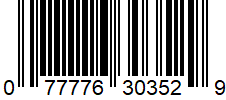

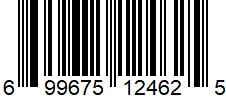


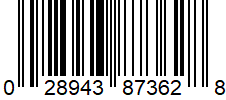


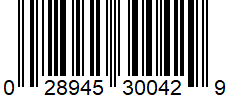


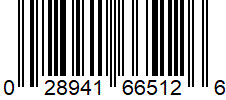

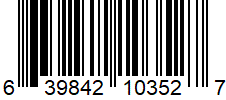


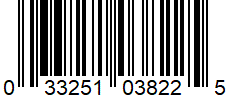




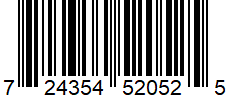


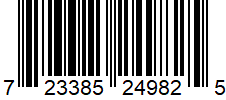

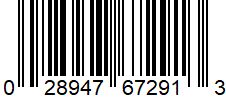


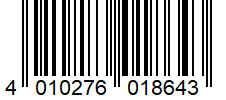


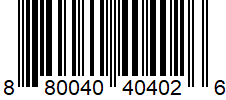


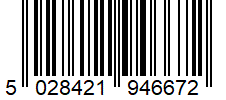


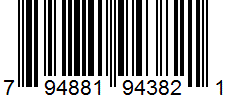


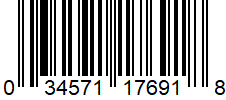


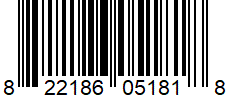


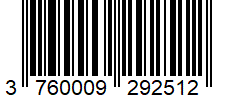


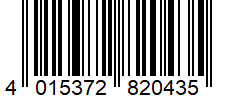


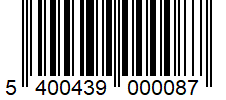


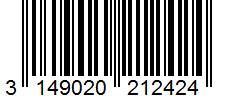


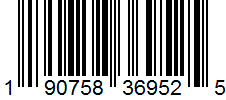


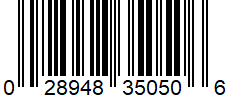





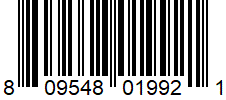


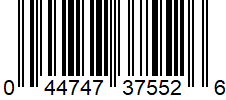


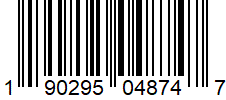


1 thought on “Bach: “Sei Solo”, Sonatas and Partitas for Violin Solo — Comparison Summary”